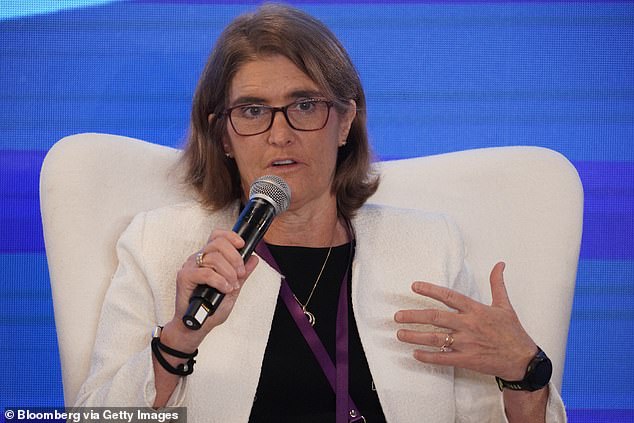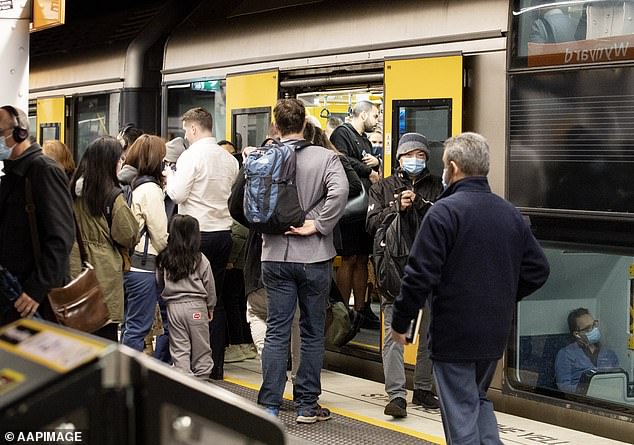Jim Chalmers makes an extraordinary case that one factor is NOT fueling Australia's inflation crisis
Treasurer Jim Chalmers has denied that high immigration is responsible for high inflation, with the extraordinary claim contradicting the Reserve Bank.
A record number of 500,000 foreign migrants came to Australia in the last financial year, new figures out this week are expected to show.
Australia's inflation rate of 4.9 percent in October remains well above the RBA's target of 2 to 3 percent.
But when asked whether strong population growth due to high immigration was driving inflation, Dr Chalmers said it was not.
“Our inflation is primarily driven by other things, including global oil prices in that September quarter, but also by some other factors,” he told Sky News presenter Kieran Gilbert on Sunday.
Treasurer Jim Chalmers has denied that high immigration is responsible for high inflation – contradicting the Reserve Bank

The Treasurer's suggestion that expensive petrol prices are fueling inflation contradicts Reserve Bank Governor Michele Bullock's claim that high immigration was the cause of Australia's “sticky” services inflation.
This came after a Resolve Political Monitor poll of 1,605 people for The Sydney Morning Herald found that 62 percent of voters thought immigration was too high, while only 16 percent of respondents endorsed Labor's approach.
The Treasurer's suggestion that expensive petrol prices are fueling inflation contradicts Reserve Bank Governor Michele Bullock's claim that high immigration was to blame for Australia's “sticky” services inflation.
“We have had very strong immigration into Australia,” she told a forum of central bankers in Hong Kong last month.
'And even though we see consumption per person decreasing, total consumption remains at the same level.
'That also means that demand has remained at the same level.
“That's why we're seeing service price inflation in Australia being quite persistent.”
Services inflation rose 5.8 percent in the year to September, the Australian Bureau of Statistics' quarterly consumer price index shows.
In October, car fuel prices rose 8.6 percent over the year, but this marked a big drop from September's 19.7 percent year-on-year, the more volatile monthly inflation series showed.
With rental prices rising at an annual rate of 6.6 percent in October, Dr Chalmers announced that foreign investors would pay three times the application fee if an investment property was left vacant for six months or more.
“We want those properties on the rental market if you're not using them,” he said.
'There are too many vacant properties in Australia. Part of the challenge here is that we have strict rules for foreign investors, but we want to make them stricter.”
But the treasurer did not link expensive rents to rising population growth or an influx of international students moving mainly to Sydney and Melbourne.
Net overseas migration levels in Australia are also at record highs.
In the year to March the number rose by 454,400 and new figures for June, due on Thursday, are expected to show immigration levels above 500,000 for the first time in history.
“Last financial year, net overseas migration peaked at above 500,000 people and we expect this to fall substantially next financial year,” Dr Chalmers said.

Australia's net overseas migration levels rose by 454,400 over the year to March and new figures for June, due on Thursday, are expected to show immigration levels above 500,000 (pictured is Wynyard train station in Sydney to see)
In the May budget, the Ministry of Finance predicts 400,000 net newcomers in 2022-2023, with the influx slowing to 315,000 in 2023-2034.
But monthly official data on overseas arrivals and departures shows a net 429,580 migrants moved to Australia in the year to September, suggesting population growth is yet to materially moderate.
The Treasury Department will release updated forecasts on net overseas migration on Wednesday as part of its Mid-Year Economic and Fiscal Outlook.
Home Secretary Clare O'Neil is expected to announce a 185,000 cut in net overseas migration over four years on Monday.
This would mean 1.310 million migrants moved to Australia in the five years to June 2027, rather than 1.495 million forecast in the May Budget.
Her department in May set the permanent intake for 2023-2024 at 190,000, suggesting that the cuts to immigration intake are likely to stem from the influx of international students, which is classified as long-term.
The Treasury forecast in May that almost 1.5 million migrants would move to Australia in the five years to June 2027, with annual inflows falling to 260,000 in 2024-2025.
But even this would be well above the 182,100 in 2006, during the mining boom.
Dick Smith has called for net overseas migration to be reduced to 70,000 per year, equal to the 20th century average. He told Ny Breaking Australia that Labor had failed those struggling in the suburbs who cannot afford a home.
“Labour has failed the working class because it has failed to communicate that we need a population plan,” the 79-year-old entrepreneur said.
'You would think they would have a population plan so that working people can buy a house and buy their food.
“We need sensible levels of immigration so that people can afford homes as they did in our country's first century and a half.”
